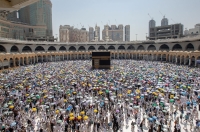
The capacity of Mataf in the Grand Mosque is 107,000 pilgrims per hour, equivalent to over double its previous capacity which was limited to fifty thousand pilgrims. The first phase of Mataf expansion project commenced in 2013. The expansion process included three phases over three years, concluding in 2015. The total constructed area comprising all the project's elements and components is estimated at 210,000 m 2 . Mataf comprises several floors featuring designated locations for wheelcha...
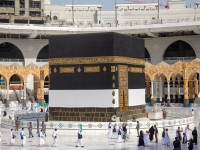
Al-Kaaba's Kiswa (black cloth) is lifted to preserve its cleanliness and safety and to prevent tampering or veneration due to erroneous beliefs held by some pilgrims. This necessitates lifting the Kiswa and surrounding al-Kaaba with pieces of white fabric covering a circumference of forty-seven m. The Kiswa is then returned to its previous position after the conclusion of the Hajj season. The Kiswa is typically lifted in the middle of the month of Dhu al-Qa'dah and its lower edges are...
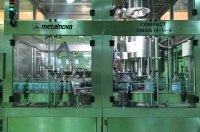
The process of purifying and sterilizing Zamzam water is carried out by using two large pumps that draw water from the well to the King Abdullah Project for Zamzam Water Development. The water is transported through rust-resistant pipes that pass through air and washing chambers to protect the water from any potential contaminants. Zamzam water is transferred to a dedicated station for filtration, purification, and sterilization. Samples are taken and subjected to analysis to verify the water&#...
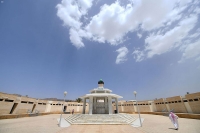
Miqat Wadi Muharram is one of the designated Mawaqit that those intending to enter Makkah al-Mukarramah for Hajj or Umrah must pass through to assume Ihram . It is located in the al-Hada Center, northwest of Taif Governorate, about fifteen km from its center. It serves as the upper Miqat for Wadi Qarn al-Manazil. Location of Miqat Wadi Muharram The Miqat Mosque at Wadi Muharram is located in al-Hada Center in Taif Governorate, at an elevation of two thousand m above sea level. It is seventy-s...
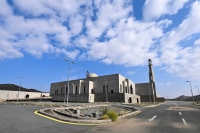
Miqat Dhat Irq is one of the Mawaqit locations that those intending to enter Makkah al-Mukarramah for Hajj or Umrah must pass through to assume Ihram . It is the Miqat for the people of Iraq, north of the Kingdom, and those traveling along their route. It is located on the path of the Iraqi pilgrimage route in Taif Governorate, northeast of Makkah al-Mukarramah, at a distance of ninety km. Miqat Dhat Irq in the Prophetic Biography The name Dhat Irq is mentioned in the Prophetic biography in...
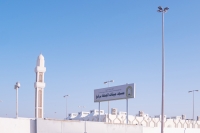
Miqat al-Juhfah is one of the Mawaqit designated by the Prophet Muhammad, peace be upon him (PBUH), for those heading to the Grand Mosque in Makkah al-Mukarramah with the intention of performing Hajj or Umrah. It is the Miqat for the people of the Levant, Egypt, Morocco, and pilgrims from Africa and those traveling along their route if they do not pass through al-Madinah al-Munawwarah . It is located northwest of Makkah al-Mukarramah, near Rabigh Governorate . The location of Miqat al-Juh...
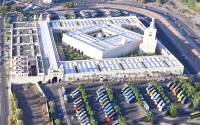
Miqat Dhu al-Hulayfah, also known as 'Abar Ali,' is one of the Mawaqit locations that those intending to enter Makkah al-Mukarramah for Hajj or Umrah must pass through to assume Ihram. It is the Miqat for the people of al-Madinah al-Munawwarah and those traveling along their route. The location of Miqat Dhu al-Hulayfah It was named 'Dhu al-Hulayfah' as a diminutive form of the plant 'al-Hulaf' (Elaeagnus) which is abundant at the site. It is also called 'Aba...

Miqat Yalamlam is one of the Mawaqit that those intending to enter Makkah al-Mukarramah for Hajj or Umrah must pass through to assume Ihram. Passing through or alongside it is required for entering into the rituals of Hajj and Umrah for Muslims. It is located in al-Lith Governorate , about eighty-five km southwest of Makkah al-Mukarramah, along the coastal road. It is the Miqat for the people of Yemen, the southern provinces of the Kingdom, and those who pass by it. Location of Miqat Yalaml...
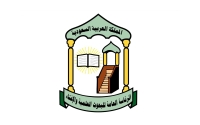
The General Presidency of Islamic Research and Ifta is entrusted by the government of the Kingdom of Saudi Arabia to issue Fatwas related to the personal affairs of government entities, the private sector, and individuals, in addition to conducting research in religious fields within the Kingdom. The presidency was established by a Royal Decree in 1954 under the name 'Dar al-Ifta and Supervision of Religious Affairs and Islamic Institutions,' which was later changed into the 'Gen...
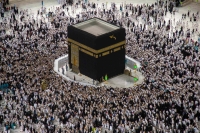
The Umrah season in the Kingdom of Saudi Arabia is the period during which pilgrims are allowed to perform the Umrah rituals, which consist of circumambulating al-Kaaba al-Musharrafa , walking between Safa and Marwa , after entering the state of Ihram from one of the designated Miqat (entry points for Ihram ) before performing Hajj or Umrah. The Umrah season for pilgrims arriving from abroad and the issuance of their visas begins annually after the Hajj season, specifically on the thirteenth of...
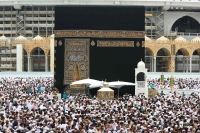
Al-Kaaba al-Musharrafa, located in the Grand Mosque in Makkah al-Mukarramah , is washed on the fifteenth of Muharram each Hijri year. Before the washing, it is cleaned with four straw brooms that have silver handles, used to sweep away dust. These brooms are inscribed with the phrase: 'This is the glorious Kaaba, how fragrant is its aroma and how pure are the walls washed with light.' A set of tools and copper vessels are used to wash al-Kaaba al-Musharrafa, in addition to four ten-l ...
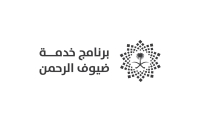
Yes, the Kingdom of Saudi Arabia offers comprehensive coverage through the 'Health Insurance for Umrah Pilgrims from Outside the Kingdom' program, which was launched in 2019 as part of the Pilgrim Experience Program , one of the initiatives of Saudi Vision 2030 . This program compensates pilgrims in case of any issues or disasters during their travel or stay, providing treatment and quick solutions for emergencies, ensuring an improved pilgrimage experience, and facilitating the perfo...